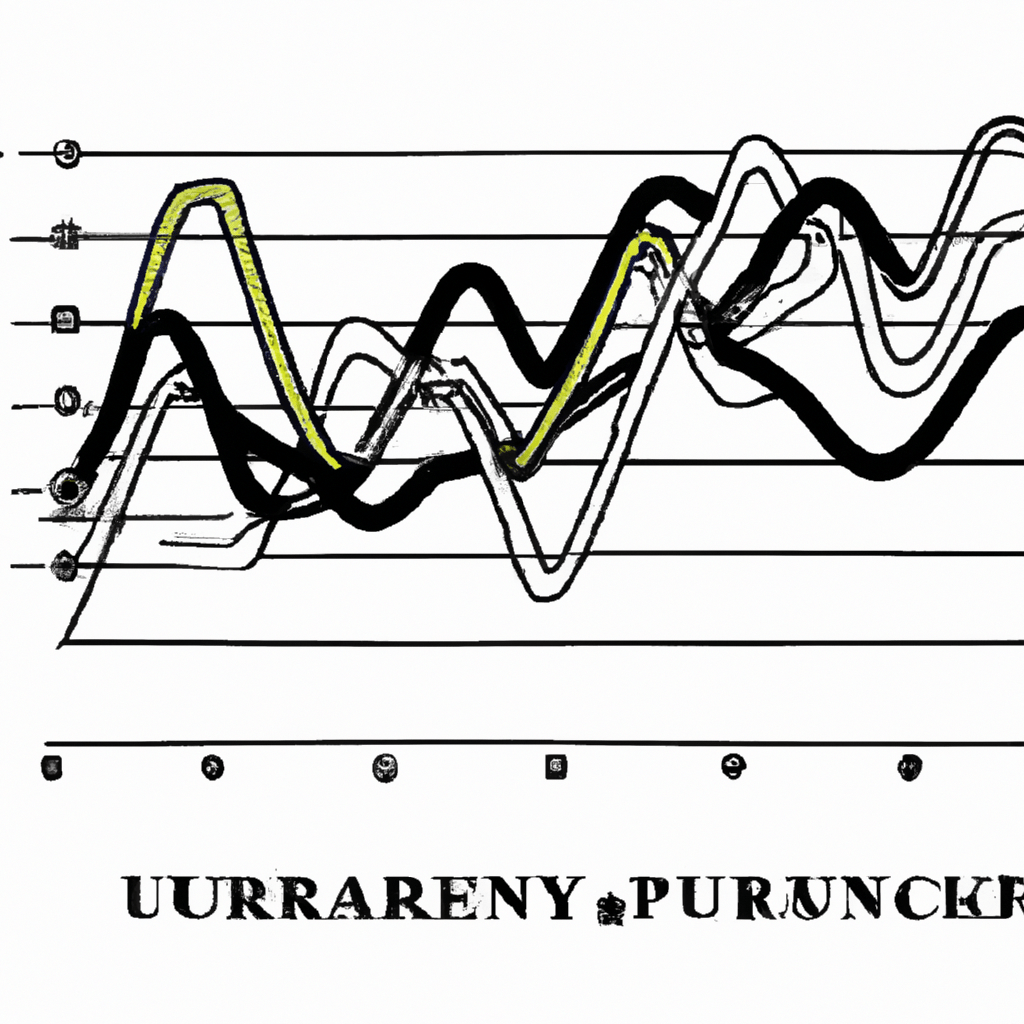Are you intrigued by the world of forex trading? Do terms like pips, spread, and Fibonacci leave you feeling confused? If so, you're not alone. Forex trading is a complex and dynamic market that can seem overwhelming to beginners. But fear not, because in this comprehensive guide, we will demystify the world of currency exchange and take you on a journey through the ins and outs of forex trading. From understanding the basics to mastering advanced techniques, we will cover it all. So, if you're ready to dive into the exciting world of forex, keep reading to uncover the secrets of successful traders and explore strategies for profitable trading. Whether you're a beginner or an experienced trader, this article is your ultimate resource for all things forex. Let's get started!
1. “Understanding Forex Trading: A Comprehensive Guide to the World of Currency Exchange”

Forex trading, also known as foreign exchange trading, is the process of buying and selling currencies in the global marketplace. It is a decentralized market where participants can trade currencies directly with each other, without the need for a central exchange or intermediary.
Understanding forex trading requires a comprehensive guide to navigate the complexities of the world of currency exchange. In this guide, we will delve into the key concepts and terms associated with forex trading, providing you with a solid foundation to start your journey in this dynamic market.
One of the fundamental concepts in forex trading is the concept of pips. A pip, short for "percentage in point," is the smallest unit of measurement used to denote changes in currency prices. Most currency pairs are quoted to four decimal places, with the fourth decimal place representing a pip. For example, if the EUR/USD currency pair moves from 1.1200 to 1.1201, it has increased by one pip.
Another important concept is the spread, which refers to the difference between the buying and selling prices of a currency pair. It is essentially the cost of trading and is typically measured in pips. The spread can vary depending on market conditions and liquidity.
Forex trading also involves the concept of swaps. A swap is an interest rate differential between the two currencies in a currency pair. When holding a position overnight, traders may either receive or pay swap rates, depending on the interest rate differentials.
Scalping is a popular trading strategy in forex. It involves making small profits from frequent trades over short timeframes. Scalpers aim to capture small price movements and accumulate profits over time.
Additionally, Fibonacci retracements are widely used by forex traders to identify potential support and resistance levels. This technical analysis tool is based on the Fibonacci sequence and helps traders identify areas where price reversals may occur.
Overall, forex trading can be a lucrative endeavor for those who take the time to understand its intricacies. By familiarizing yourself with terms such as pips, spread, swap, scalping, and Fibonacci, you will gain a solid grasp of the fundamentals of forex trading. With the help of reliable forex signals and a well-thought-out trading strategy, you can potentially capitalize on the dynamic nature of the forex market and achieve your financial goals.
2. “Mastering Forex Trading Techniques: From Pips to Fibonacci, Uncover the Secrets of Successful Traders”

Mastering Forex Trading Techniques: From Pips to Fibonacci, Uncover the Secrets of Successful Traders
Forex trading, also known as foreign exchange trading, is the process of buying and selling currencies in the global marketplace. It is the largest and most liquid financial market in the world, with daily trading volumes exceeding $5 trillion. To be successful in forex trading, one must possess a deep understanding of various techniques and strategies that can help maximize profits and minimize risks.
One of the fundamental concepts in forex trading is the pip. A pip, short for "percentage in point," represents the smallest unit of measurement for currency movements. It is crucial to comprehend the value of pips as they determine the profitability of a trade. Traders use pips to calculate potential gains or losses and assess the risk-reward ratio of a trade.
Another essential aspect of forex trading is understanding the spread. The spread refers to the difference between the buying and selling price of a currency pair. It is essentially the cost of executing a trade. Low spreads are favorable for traders as they allow for more cost-effective trading. However, it is important to note that spreads can vary across different currency pairs and trading platforms.
Traders also need to be familiar with swap rates, which are the interest rate differentials between the currencies being traded. Swaps are typically applied to positions held overnight, and they can either incur costs or generate profits depending on the interest rate differentials and the direction of the trade. Being aware of swap rates is crucial for traders who employ long-term trading strategies.
Scalping is a trading technique that involves making numerous quick trades to take advantage of small price movements. It requires traders to have a deep understanding of market dynamics and the ability to react swiftly to changing conditions. Scalping can be highly profitable if executed correctly, but it also carries significant risks due to the fast-paced nature of the strategy.
Fibonacci retracement levels are widely used by forex traders to identify potential support and resistance levels in the market. These levels are based on a sequence of numbers discovered by the Italian mathematician Leonardo Fibonacci. By applying these levels to price charts, traders can anticipate potential price reversals or continuations, aiding in making informed trading decisions.
In conclusion, mastering forex trading techniques is a continuous learning process. From understanding the value of pips and spreads to utilizing strategies like scalping and Fibonacci retracements, successful traders combine various tools and techniques to analyze the market and make profitable trades. By staying informed and continually refining their skills, traders can uncover the secrets of forex trading and achieve long-term success in this dynamic and exciting market.
3. “Navigating the Forex Market: Exploring Spread, Swap, and Scalping Strategies for Profitable Trading”

Navigating the Forex Market: Exploring Spread, Swap, and Scalping Strategies for Profitable Trading
Forex trading, also known as foreign exchange trading, is the buying and selling of currencies in the global market. It is a decentralized market where currencies are traded electronically over-the-counter (OTC), meaning that trading takes place directly between participants without a central exchange. In this dynamic market, traders can profit from fluctuations in exchange rates by speculating on the rise or fall of one currency against another.
To successfully navigate the forex market, traders need to understand and utilize various strategies. In this section, we will explore three important strategies: spread trading, swap trading, and scalping.
1. Spread Trading:
Spread refers to the difference between the buying and selling price of a currency pair. Forex brokers make their profits through spreads, which can vary depending on market conditions and broker policies. Traders can employ spread trading strategies to take advantage of these price differentials. By aiming to buy at the lower end of the spread and sell at the higher end, traders can capture the price movements and generate profits.
2. Swap Trading:
Swap trading, also known as rollover or overnight trading, involves holding a position overnight to earn or pay the interest rate differential between two currencies. Each currency has an associated interest rate, and when a forex trade is held overnight, the trader effectively borrows one currency to buy another. The difference in interest rates between the two currencies determines whether the trader will earn or pay a swap fee. Traders can use swap trading to profit from the interest rate differentials, especially when combined with a well-planned trading strategy.
3. Scalping:
Scalping is a short-term trading strategy that aims to make small profits through frequent and rapid trades. Traders using this strategy, known as scalpers, focus on capturing small price movements within a short time frame. Scalping requires quick decision-making, strict risk management, and the ability to react swiftly to market changes. Traders can use technical analysis tools, such as Fibonacci retracements, to identify potential entry and exit points for their scalping trades.
By incorporating these strategies into their forex trading approach, traders can increase their chances of profitability. However, it is important to note that each strategy carries its own risks and requires careful consideration. Traders should always conduct thorough research, stay updated with market conditions, and develop a comprehensive trading plan before implementing any strategy.
In conclusion, navigating the forex market successfully requires a deep understanding of various trading strategies. Spread trading, swap trading, and scalping are three strategies that can be utilized to enhance profitability. By incorporating these strategies and staying informed about market dynamics, traders can increase their chances of achieving success in the exciting world of forex trading.
In conclusion, forex trading is a complex yet rewarding world of currency exchange. By understanding the basics of forex trading, such as pips and Fibonacci techniques, traders can gain an edge in the market. Additionally, mastering trading techniques like spread, swap, and scalping strategies can lead to profitable trades. With the help of forex signals and a deep understanding of the market, traders can navigate the forex market successfully. Remember, forex trading requires patience, discipline, and continuous learning. So, whether you're a beginner or an experienced trader, keep exploring and honing your skills to achieve success in the forex trading arena.





